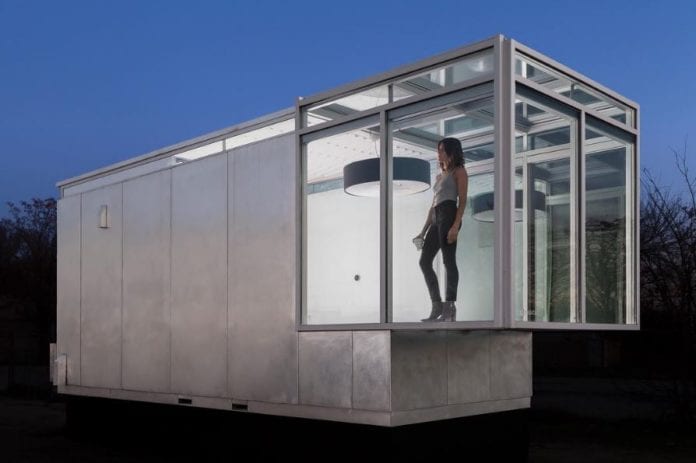From dumpster to smart home
AUSTIN–Jeff Wilson, CEO and founder of KASITA, moved from a modern, comfortable, 3,000 square-foot home to a 33 square-foot dumpster.
His inspiration for the drastic, unconventional change came from a UCLA study that tracked the movements of 32 middle class families throughout their homes, and determined that most of a home is underutilized and unnecessary.

Researchers at the university followed the location of each parent and child on the first floor of the house every 10 minutes over two weekday afternoons and evenings. They found that only around 400 square feet of the first floor’s available square footage was used.
Wilson recognized the waste in this style of living, so he decided to take drastic measures. After some home decorating, his empty (thankfully) dumpster became a home in a transformation that resulted in what he describes as the “ultimate tiny home.”
https://www.instagram.com/p/BGK9o_QKgpL/?taken-by=kasita
“It turns out life was a lot better,” Wilson said at Start@ETS. “I had more disposable income, I was consuming less and didn’t ever feel tied down.”
Being in a 33-square-foot container without any of the luxuries that keep most of us entertained left Wilson with a lot of time to think about what was wrong with the housing market. Here is what he came up with:
- Housing is too big/slow
- The average development takes years to permit, finance and build.
- There appears to be no land
- Urban centers are running out of land to build on (and it’s always about the land).
- The home is (dis) connected
- We are living in a land of (often frustrating) walled gardens.
Solving the urban housing crisis
His solution to these problems? KASITA.
https://www.instagram.com/p/8fmZHHKgoc/?taken-by=kasita
KASITA is a smart, IoT-enabled micro-home designed to fit in the heart of a city or in someone’s backyard. Something straight out of the sci-fi novel Ready Player One (also a product of Austin), these rectangular stackable shelf-like structures are more than 300-square-feet large, and have generous 10.5 foot ceilings. According to the company, individual homes fit in a single-unit “cradle,” while multi-home racks stack up to ten floors high.
“Affordable housing should be a human right,” Wilson said. “KASITA will cost less than $1,000 a month in all markets. It’s not about the most affordable housing, it’s about getting paid to live in your own home.”
The IoT of it all
A KASITA will be outfitted with central heating and cooling, a queen-sized bed, full shower, dual-induction cooktop, microwave/oven combination, washer/dryer, refrigerators and the “latest IoT technology.”
https://www.instagram.com/p/8lnT-NKgiB/?taken-by=kasita
Each home is a controlled box with an integrated feedback loop and machine learning for added convenience. The walls are all modular, so a portion of the house’s wall can be removed and replaced with more efficient technology.
The company is currently building partnerships with city representatives and non-profits to help provide solutions to the urban housing crisis. Mayors from San Jose, California to Providence, Rhode Island have toured the prototype that sits near downtown Austin. There is currently no set release date.

